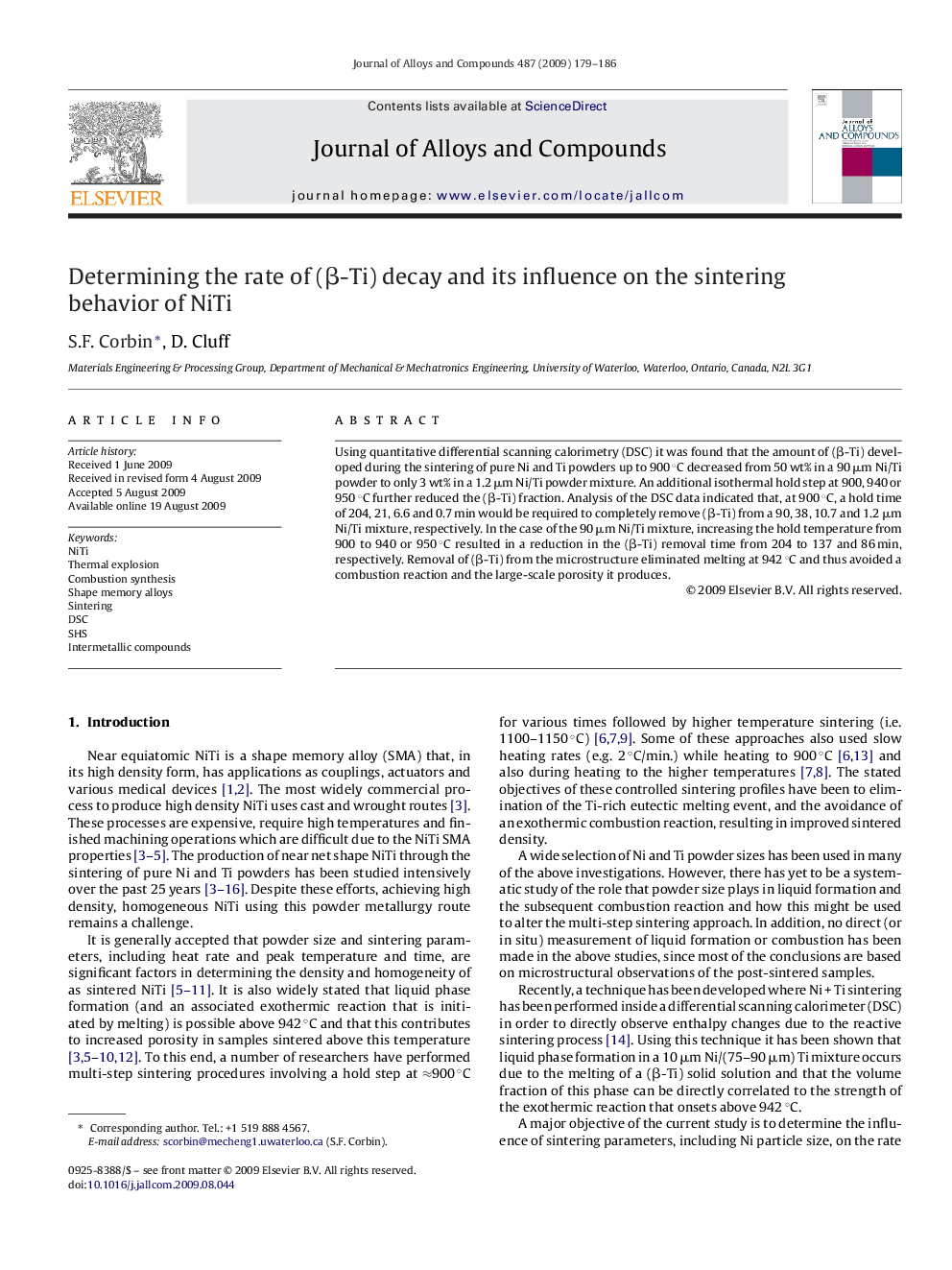| Article ID | Journal | Published Year | Pages | File Type |
|---|---|---|---|---|
| 1621748 | Journal of Alloys and Compounds | 2009 | 8 Pages |
Using quantitative differential scanning calorimetry (DSC) it was found that the amount of (β-Ti) developed during the sintering of pure Ni and Ti powders up to 900 °C decreased from 50 wt% in a 90 μm Ni/Ti powder to only 3 wt% in a 1.2 μm Ni/Ti powder mixture. An additional isothermal hold step at 900, 940 or 950 °C further reduced the (β-Ti) fraction. Analysis of the DSC data indicated that, at 900 °C, a hold time of 204, 21, 6.6 and 0.7 min would be required to completely remove (β-Ti) from a 90, 38, 10.7 and 1.2 μm Ni/Ti mixture, respectively. In the case of the 90 μm Ni/Ti mixture, increasing the hold temperature from 900 to 940 or 950 °C resulted in a reduction in the (β-Ti) removal time from 204 to 137 and 86 min, respectively. Removal of (β-Ti) from the microstructure eliminated melting at 942 °C and thus avoided a combustion reaction and the large-scale porosity it produces.
